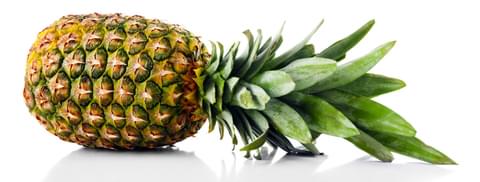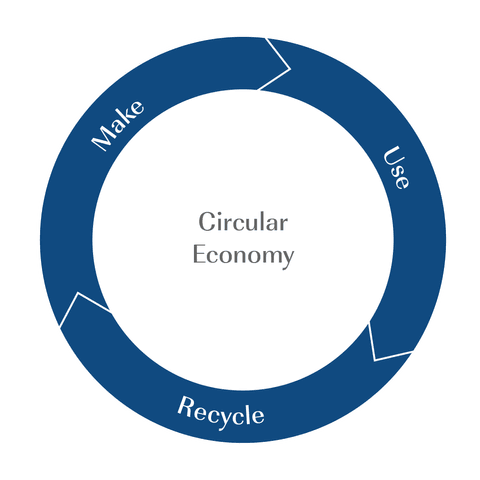

The Role of Enzymes in Food Sustainability
The food we eat and how its produced affects not only our health, but also the environment. There is a lengthy process that comes with getting food products from farm to supermarket including planting, growing, processing, transporting, developing, preparing, and consuming. Every step creates greenhouse gases that contribute to climate change – if there was a solution to reduce the emissions in at least one of these steps, it would be worth doing, right?
To the consumer, the association of enzymes and the food they eat is not an obvious one. However, according to the Enzyme Technical Association, “nearly all commercially prepared foods contain at least one ingredient that has been made with enzymes”. Knowledge of the purpose of enzymes, the role they play and where they can add value in food ingredient production aids the understanding of the importance of enzymes used as food processing aids.
“..nearly all commercially prepared foods contain at least one ingredient that has been made with enzymes
Enzymes that are used in food are defined as naturally occurring proteins that enhance biochemical reactions. They can be extracted from plants or animals, for example, bromelain can be extracted from pineapple and amylase, lipase, and protease are extracted from pig’s pancreas. Enzymes can also be microbially designed and manufactured based on their naturally derived counterparts. Enzymes contribute a unique function in food ingredient development depending on the substrate material and the desired outcome.
How do enzymes contribute to food sustainability?

Reduction in food waste
Not only can enzymes contribute to the reduction of carbon emissions - they can also help fight world hunger. According to the Food Safety Magazine, food wastage can increase the price of food resulting in nutritious foods becoming out of reach for the world’s poorest consumers. Food Safety Magazine predicts if food waste can be reversed, then enough food could be saved to feed 2 billion people – three times more than the estimated 700 million people that are currently undernourished. Enzymes can extend the shelf life of foods, for example by removing or mitigating the damage oxygen exposure does to the food quality. Starch can be broken down into smaller dextrin preventing it from recrystallising in the same way, which helps maintain the softness of bread allowing it to stay fresher for longer, for example. This means consumers have more time before their food passes its best, resulting in less food waste.
Speed-up production & increased yield.
Enzymes can accelerate the manufacture of food ingredients and improve efficiencies through increased yields during processing. Enzymes can be used for flavour enhancement. For example, to develop a strong flavour in cheese, the cheese spends months maturing naturally ripening the flavours and enhancing the texture of the cheese to the desired style. The addition of enzymes can accelerate this ripening process through metabolising the fatty acids and amino acids at a faster rate.
In comparison to other processing techniques, enzymatic processing reduces energy and water consumption reducing cost for manufacturers to produce their final food products. Passing on these efficiencies enables food manufacturers to make their products accessible to more consumers and begin to counteract the effects of world hunger. The reduction in energy and water consumption also reduces the carbon footprint of the companies using enzymes to increase yield and enhance flavour.

Increased digestibility of plant proteins
It’s no secret that livestock farming produces a considerable amount of CO2 emissions each year, contributing to 14.5% of all anthropogenic greenhouse gases, with cattle raised for both beef and milk being responsible for 65% of the livestock sectors emissions.
Whey protein is one of the most used proteins in the nutritional industry. It contains all the essential amino acids and is easily digested, but could a switch to plant protein reduce the demands for whey protein and reduce the emissions contributed by the dairy industry?
Plant protein is notoriously difficult to digest, but with enzymes plant protein sources can be hydrolysed into smaller protein peptides, improving its bioavailability therefore meaning the protein can be more easily digested. As more is understood about plant proteins, manufacturers are more successfully formulating different sources of plant proteins to produce plant protein ingredients that contain all essential amino acids making them a more nutritionally comparable protein to animal-derived proteins in a bid to reduce carbon emissions.
How will enzymes fit into the future?
The continued development of enzymes is necessary for food ingredient production for a healthier and more sustainable future. It’s estimated that a third of all food produce is wasted, the use of enzymes can transform this from being waste to streams of value-added products.
Advancements in enzyme engineering are making the natural biocatalysts tools to valorise agri-food and by-product waste, recovering essential nutrients, and converting some by-products into revenue returns. Transforming companies from contributing to a linear economy, where resources are used and the waste is disregarded, to a circular economy, where resources are used, and the waste is recycled.
Enzymes can be the difference between the poorest consumers being able to access food products or not, and contribute or counteract ‘world hunger’ – which, from an economic perspective, is worth investing in.
It’s clear that if the food sector wants to become sustainable, accessible and move towards being carbon neutral, then the development and future of enzymes is a major contributing factor to making this happen.
